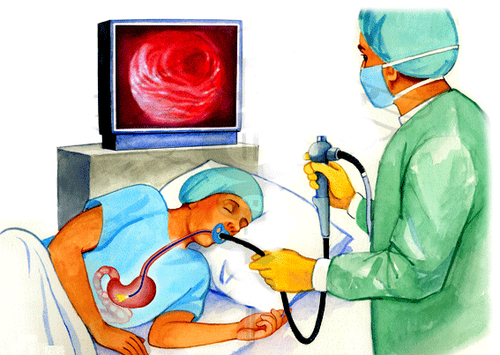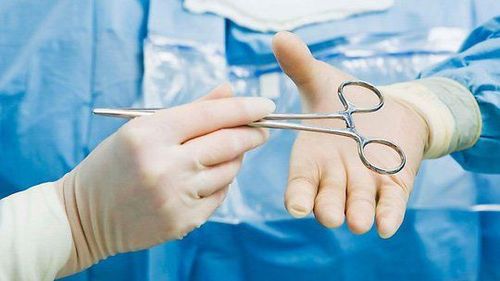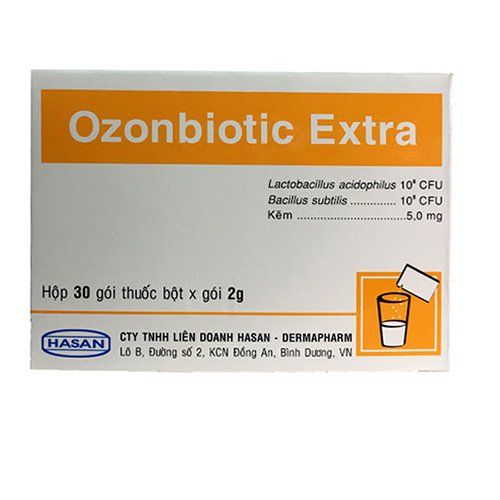This is an automatically translated article.
Gastrointestinal bleeding due to rupture of esophageal varices ranks first in terms of bleeding, patients have symptoms of vomiting blood with a significant amount, sometimes massive bleeding causing death before emergency treatment. This is one of the causes of increased mortality in cirrhotic patients.
1. What is gastrointestinal bleeding due to ruptured esophageal varices?
Esophageal vein rupture in cirrhotic patients is the main cause of gastrointestinal bleeding. About 90% of esophageal varices cause gastrointestinal bleeding due to increased portal pressure due to cirrhosis.
For blood to be transported from certain organs of the digestive tract to the liver, it must be through the portal vein. Increased venous pressure causes a buildup of blood in nearby blood vessels, including those in your esophagus. Accordingly, the veins begin to dilate and will swell due to increased blood flow, which over time can cause esophageal varices to rupture.
The most common cause of portal hypertension is cirrhosis of the liver. This disease can develop because the patient is addicted to alcohol or because of other serious infections such as hepatitis. In addition, thrombosis (or blood clot in the portal vein) is also a possible cause of portal hypertension.

Xuất huyết tiêu hóa do vỡ tĩnh mạch thực quản là bệnh lý thường gặp ở người nghiện rượu
2. Symptoms of gastrointestinal bleeding due to rupture of esophageal veins
Common esophageal varices in cirrhotic patients will probably cause no symptoms, except in the case of esophageal varices. At that time, you may have symptoms including:
The patient is vomiting blood (a significant amount of blood); Passing stools that are black (or bloody in rare cases); Stomachache; Feeling dizzy, lightheaded; Shock or loss of consciousness (for severe illness caused by excessive blood loss); There are manifestations of chronic liver disease such as: yellow skin, yellow eyes, easy bruising and easy bleeding, ...
3. Diagnosis of gastrointestinal bleeding caused by rupture of esophageal varices
When diagnosing gastrointestinal bleeding due to ruptured esophageal varices in a patient with cirrhosis, the doctor will need to combine many different aspects and techniques, including:
Symptoms in the patient; Medical history, conduct clinical examination; Place a nasogastric tube; Perform blood tests, gastroscopy, ECG (electrocardiogram); Bleeding site diagnostic scintigraphy (TRBCS); People with cirrhosis should regularly visit medical facilities to check for esophageal varices through techniques such as endoscopy or computed tomography (CT Scan). SEE ALSO: Treatment of gastrointestinal bleeding due to portal hypertension

Nội soi dạ dày cho phép chẩn đoán bệnh lý xuất huyết tiêu hóa do vỡ tĩnh mạch thực quản
4. Treatment of gastrointestinal bleeding caused by rupture of esophageal varices
4.1. The principles of treatment
Stop bleeding; Active resuscitation, anti-shock in patients; Restore blood volume in the vascular lumen; Secondary prophylaxis of gastrointestinal bleeding due to esophageal varices in patients with cirrhosis.
4.2. Active resuscitation, anti-shock treatment
The aim is to stabilize hemodynamics (with systolic blood pressure > 90mmHg, the patient is not impaired); Immobilization in 3 aspects: mental, systemic and local Infusion: Prioritize the use of macromolecular solutions (eg Hemocel, Dextran,...), followed by 5% Glucose and blood transfusion. ensure that the patient's hemoglobin is > 80 g/l; In patients with cirrhosis, it is necessary to control coagulation and platelets.
4.3. Hemostatic treatment
Hemostasis by inserting a Sonde tube (inserted balloon): if the patient is bleeding and has a hemodynamic state, endoscopic hemostasis cannot be performed;
Immediately after hemodynamic stability, immediately perform endoscopy, the doctor conducts ligation of esophageal varices through sclerotherapy or rubber ring.
Drugs used in the treatment of gastrointestinal bleeding due to rupture of esophageal varices are as follows:
Using drugs with vasopressor effects to reduce portal venous pressure: Octreotide, Terlipressin, Somatostatin,... just before the procedure. endoscopy if gastrointestinal bleeding due to vein rupture is suspected and persists for 5 days; Prophylactic antibiotics: Quinolone, Ceftriaxone; Prophylactic treatment of hepatic encephalopathy (hepatic coma): Philpovin, Duphalac,...; Some other drugs: Transamin, vitamin K, reduce acid secretion,...
4.4. Surgical treatment: bypass surgery
Surgical methods aimed at creating a portal–host dissection can reduce portal pressure. Therefore, it has a good effect on preventing recurrent bleeding. According to experts, there are two types of surgery that are considered the most appropriate and effective, including: portal vein bypass surgery through artificial vessels (PTFE) with narrow diameter and splenectomy. splenic-renal vein junction.

Phẫu thuật bắc cầu là một phương pháp có atcs dụng dự phòng xuất huyết tái phát tốt
5. Prevention of gastrointestinal bleeding due to rupture of esophageal varices
To prevent gastrointestinal bleeding due to rupture of esophageal varices, patients need to:
Limit the risk of cirrhosis of the liver, stomach, hepatitis; Avoid loading alcoholic beverages such as wine, beer; Eat lots of green vegetables and fruits; Need to sleep on time and get enough sleep as well as avoid prolonged stress; For patients with cirrhosis, it is recommended to regularly visit medical facilities to check for esophageal varices through techniques such as endoscopy or computed tomography (CT Scan). Gastrointestinal bleeding due to rupture of esophageal varices in patients with cirrhosis is a dangerous medical emergency, if delayed and improperly handled, it will directly threaten the patient's life. Therefore, as soon as gastrointestinal bleeding due to ruptured esophageal veins is detected, the patient should be taken immediately to reputable medical facilities to receive timely treatment.
Currently, the endoscopic hemostasis technique with clip clamps in gastrointestinal bleeding at Vinmec International General Hospital is considered a modern technique with the most optimal effectiveness in the treatment of gastrointestinal bleeding. . In addition, the hospital is also fully equipped with modern machinery such as the Avance CS2 anesthesia machine, GE's R860 ventilator, and an endoscope to ensure maximum patient safety.
When performing the examination and treatment of gastrointestinal bleeding at Vinmec, customers will be welcomed and used the modern medical facilities and equipment system with complete medical services. under the guidance and advice of qualified and well-trained doctors both at home and abroad. With those advantages, Vinmec has successfully examined, diagnosed and treated many patients, providing a good chance of living and long-term health recovery.
Please dial HOTLINE for more information or register for an appointment HERE. Download MyVinmec app to make appointments faster and to manage your bookings easily.













